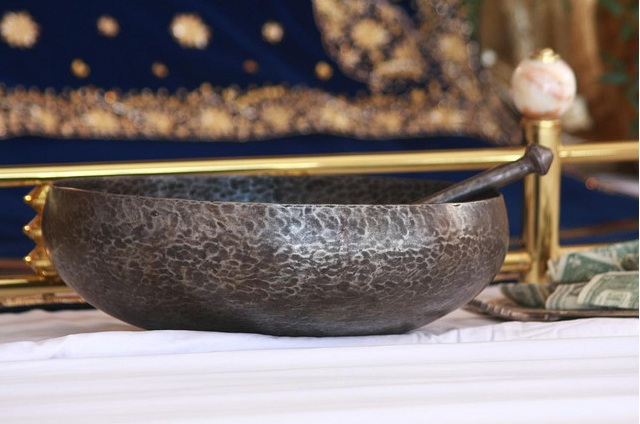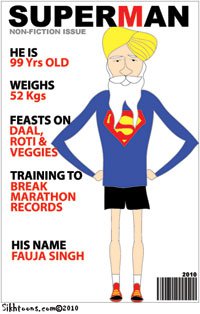
I spent this weekend in Fort Lee, New Jersey across the river from Manhattan at the Surat-Lalkaar Conference, “Kaur Voices: Exalt, Express, Empower.” As discussed previously, this event was a new collaboration between organizers of the popular Surat Conference in NY/NJ and California’s Jakara Movement. Never having attended a conference put on by either group, I was curious what the weekend would bring and eager (and a bit nervous) to help facilitate dialogue in our community about gender, sexism, and intimate violence.
Perhaps others will also have report backs and reflections on the conference in the coming days and weeks (feel free to share your thoughts in the comments), but for now I wanted to share a few highlights, a few aspects of my experience as both participant and a facilitation at Surat-Lalkaar while it’s fresh.
What struck me the most this weekend was simply the theme of the conference: issues of gender and gendered violence in the Punjabi Sikh community. As I was co-facilitating an intense discussion about a case study (based on a real situation) about child sexual abuse in a Sikh family, I looked around at the dozen or so Singhs or Kaurs in my group and realized I had never talked about this issue with a group of Sikhs. Nor had the rest of the participants in my discussion group.
A shared experience of nearly everyone in the group (and likely everyone at the conference) was the resounding silence about domestic violence, sexual assault, and child sexual abuse in our families, our gurdwaras, and our communities. There was a sense from many that these issues are indeed problems in our community, but problems that are hard to know the scope or seriousness of because no one talks about them openly. Many participants saw a tendency in our Sikh families to brush any “problems” under the rug to preserve the reputation or “honor” of the family.
 Guest blogged by Mewa Singh.
Guest blogged by Mewa Singh.
Earlier this year, I wrote an in-depth post, summarizing the workshops and questions raised at the Jakara Movement’s annual Lalkaar conference. I was hardly alone. Our sisters at Kaurista shared their thoughts, as did a number of individual participants.
So now is something big and exciting. For years a criticism of the Jakara Movement was that it was California-centric. Recently an exciting collaboration opportunity availed itself. Sevadars of the annual Surat Sikh Conference were seeking fresh blood and ideas. The Jakara Movement was seeking an opportunity to begin unveiling its numerous local projects in more venues. Synergies were found and Surat-Lalkaar 2012 was born.
As promised, here is my follow-up to Monday’s post about the Inquilab hip hop workshop in New York.
This past Saturday night brought together hundreds of Sikhs (and others) for the fourth annual Lahir: Move the Movement. I always seemed to have a conflict the last several years, but finally made it out to New Brunswick, New Jersey this year for my first Lahir. I am grateful for it.
Again, I’ll keep my words short as the video below speaks for itself. But a couple of things that were especially noteworthy to me about the experience.
The audience was really multi-generational. It was much more like a typical gurdwara sangat than I had expected, crying babies, hyper adolescents, and plenty of elders included. The energy was positive and empowering, and the high school and college-aged youth, in particular, were fired up.
The performances were extremely diverse and full of raw talent and passion. As you’ll see below, the performances (only a few of which I captured) went far beyond the spoken word and hip hop that I was expecting.
A friend of mine leaned towards me while a pre-pubescent high school student with a patka was rapping passionately about post-9/11 racism and said, “I am so excited about this new generation.” Indeed, I share her sentiment. These young people are indeed moving the movement, and in doing so, in the words of the event’s organizers, perhaps they are also “bringing Sikhi back.”

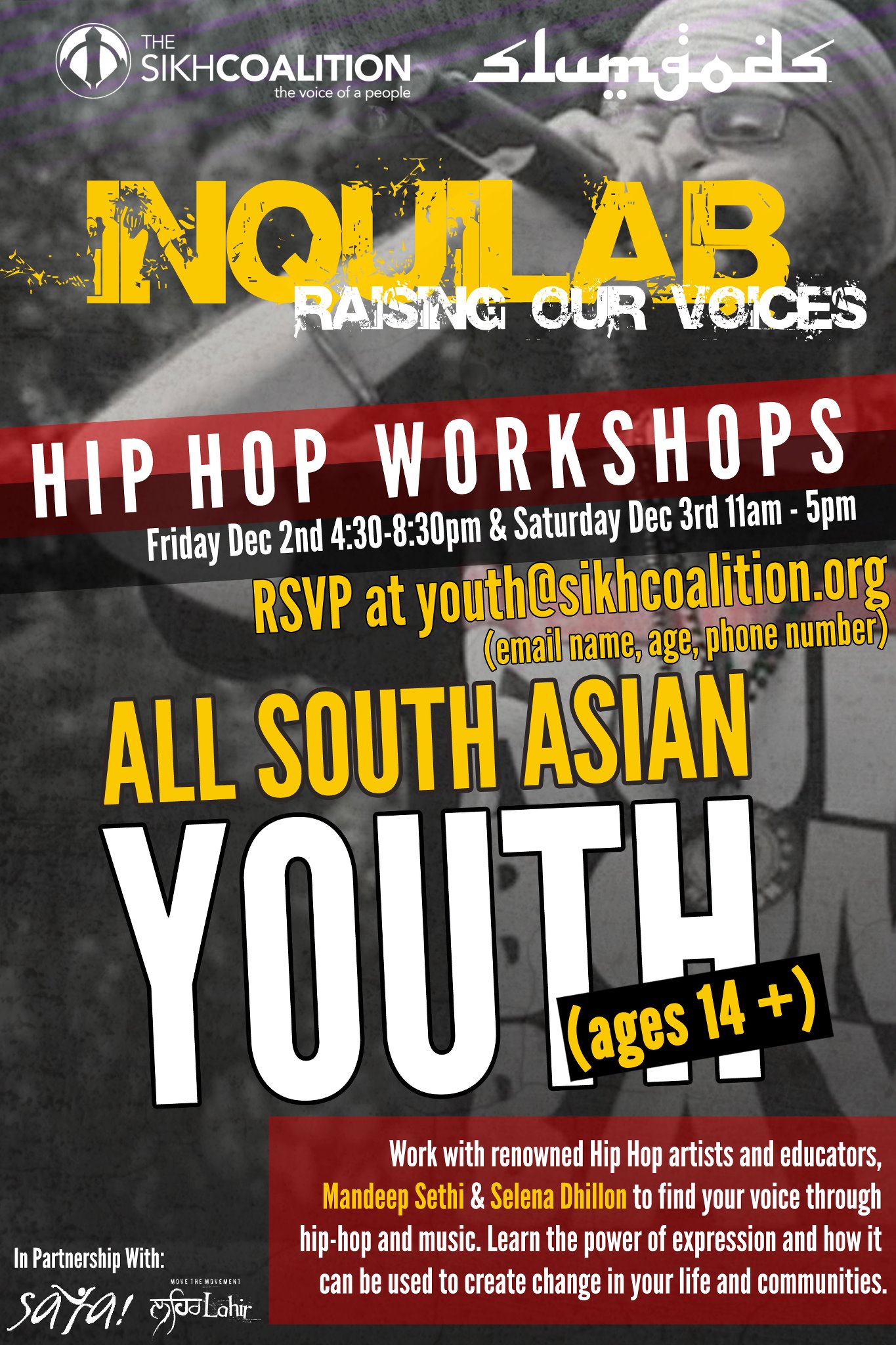 On December 2nd and 3rd, Sikh youth will have the opportunity to participate in a special workshop that will allow them to learn the power of expression and how it can be used to create change in their life and communities. Inquilab: Raising our Voices, organized by The Sikh Coalition and Slumgods, will bring together hip-hop artists, Mandeep Sethi and Selena Dhillon, to work with South Asian youth as a way of encouraging their engagement with expression. Through this participation, youth can learn how to effectively use art to inspire positive change within their own communities.
On December 2nd and 3rd, Sikh youth will have the opportunity to participate in a special workshop that will allow them to learn the power of expression and how it can be used to create change in their life and communities. Inquilab: Raising our Voices, organized by The Sikh Coalition and Slumgods, will bring together hip-hop artists, Mandeep Sethi and Selena Dhillon, to work with South Asian youth as a way of encouraging their engagement with expression. Through this participation, youth can learn how to effectively use art to inspire positive change within their own communities.
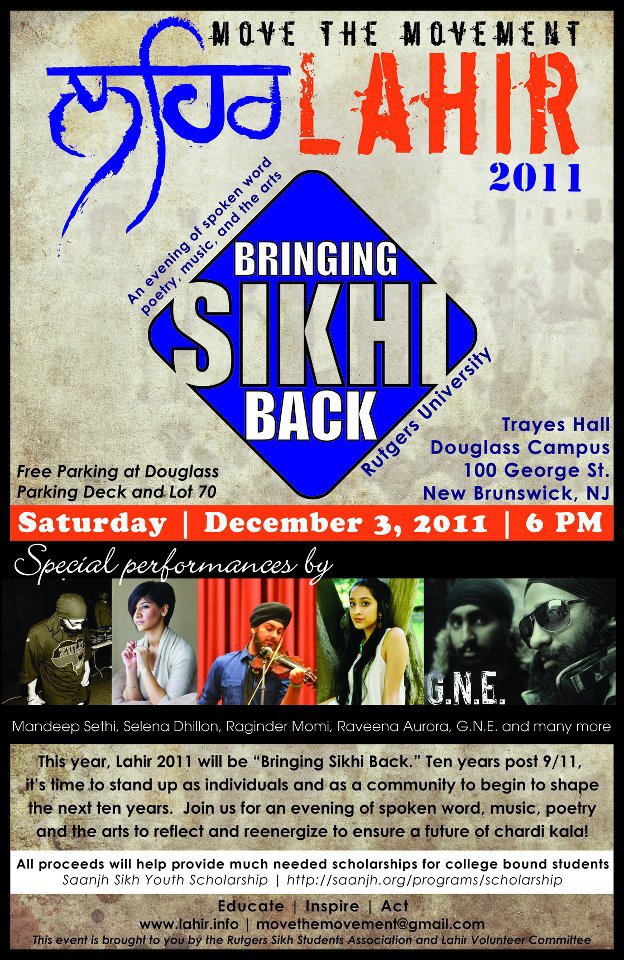 Following the workshop this weekend is Lahir – an event that aims to inspire, educate and awaken the community to rebuild the panth and encourage youth to become activists. The concert will provide a much-needed platform for powerful Sikh artists to express themselves through music, art, film, and poetry. Some more information from the organizers:
Following the workshop this weekend is Lahir – an event that aims to inspire, educate and awaken the community to rebuild the panth and encourage youth to become activists. The concert will provide a much-needed platform for powerful Sikh artists to express themselves through music, art, film, and poetry. Some more information from the organizers:
In past years, Lahir’s central theme focused on 1984 and Punjab. This year, Lahir 2011 will be “Bringing Sikhi Back”. Ten years post 9/11, it’s time to stand up as individuals and as a community to begin to shape the next ten years. Join us for an evening of spoken work, music, poetry and the arts to reflect and reenergize to ensure a future of chardi kala! This year, all proceeds will go to the Saanjh Sikh Youth Scholarship. We need strong voices in our community and we need diverse voices to help us educate others and ourselves about the historical, political, social, and economic issues that affect our community. Therefore, this event is not just for us, but for our future.
Inquilab will take place on December 2nd and 3rd 2011 at South Asian Youth Action Inc | 5405 Seabury St, Elmhurst, NY.
Lahir will take place on December 3rd 2011 at Rutgers University
We encourage you to learn more about these events, and if you are in the area – please attend and let us know how it goes!
Tears and Ashes, an event to remember 1984, is happening this evening in Toronto, Canada. The event will be a night of reflection remembering victims and survivors. It would be great to see this event organized simultaneously in cities across the globe as a way for our community to come together and remember 1984 and the events that followed. The Sikh Activist Network is organizing the event and have made arrangements for transportation from neighboring cities. See the event page for more details.
Co-blogged by Sundari and Ajaib Kaur
How many young Sikh women do you know who are looking to meet their Sardar? And how many young Sikh men do you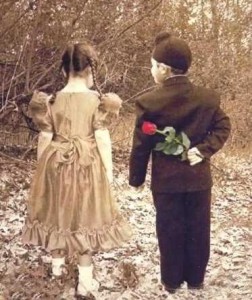 know who are looking to meet their Sardarni?
know who are looking to meet their Sardarni?
Lots? We hear you. But how can we make these two groups meet?
We decided to write a post on this topic for many different reasons. It’s clear that there is little space elsewhere to talk about how young Sikhs can meet each other, with the potential of pursuing something beyond a friendship.
Gasp! Are we actually admitting this? After a few dialogues with friends and families, we decided that we may as well start breaking the ice here on the West Coast. Over the last few years, SikhNet has been hosting “Gursikh Speed Meetings”, in cities such as New York, Boston, and Toronto. It is nice to see that the organizers has decided to bring this successful event to the West Coast, in our beloved City of Angels. These events give young, single Sikhs between the ages of 25-40 a chance to meet fellow single-and-ready-to-mingle like minded Sikhs in a communal safe space. This concept may feel familiar, because it is. The ‘speed meeting’ is a popular spin-off of an American cultured speed-dating event; having an even number of men and women participants, and rotating through getting a brief chance to connect with everyone in the room. It seems like a lot of work, but based on our feedback from some past participants, it is fairly enjoyable. The best part: if you do not click with someone mutually, you do not need to face them again. Contact information is only shared if both parties have expressed interest in each other. Fool proof for both ladies and gents!

The tragic murder of two of our grandfathers – S. Gurmej Singh Atwal and S. Surinder Singh – in Elk Grove earlier this year, shocked both the Sikh and local communities. The murderers still roam free.
This Sunday, if you are in the Sacramento area, or if you can reach there, please come and stand with your community on this ‘Day of Action.’ We are calling for justice, not vengeance. We are here to remind the world that we have not forgotten these two men and that we want the perpetrators apprehended.
The schedule reads as follows:
Day of Action
Help Find The Criminals That Murdered Surinder Singh and Gurmej Singh Atwal
Join us in Elk Grove as we blanket the city, contacting local businesses and posting reward bulletins.
Tentative Schedule:
9:45am — Gather at the EG Park & Ride near the site of the murders
10:30am — Volunteers go to assigned areas to request that local businesses put up a flyer re EG Shooting Deaths
12:30pm — Return to Park&Ride for debriefing and Ardaas
12:45pm — Langar
Intersection of East Stockton Boulevard at Geneva Point Drive Elk Grove, CA 95624
You can find more information on the Facebook event page. Stand with your community. Stand together. Stand on this ‘day of action.’
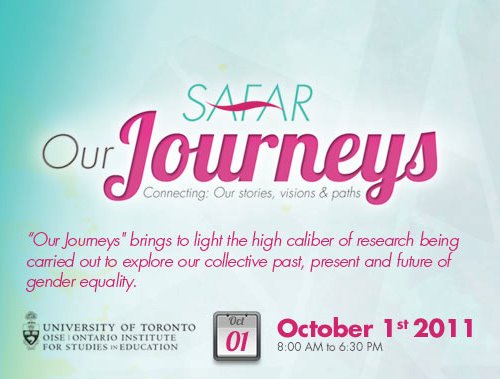 This post is a bit late, but every bit still important. Last week, the first “Sikh Feminist conference” – SAFAR – was held at the University of Toronto. The conference brought together academics, activists, and community members to reflect on the meanings and experiences of gender in a Sikh context. Opening with a keynote address by Nikky Guninder Kaur Singh, esteemed Professor at Colby College, the conference featured over 30 presentations. From the Param Marg Granth to questions of translation; from the Rahit Maryada to questions of film; from a historic opening for queer identities to questions on sex-selective abortion; from a discussion of women’s perceptions of body hair to even the questioning of questions, the conference can only be described as timely, pressing, and historic.
This post is a bit late, but every bit still important. Last week, the first “Sikh Feminist conference” – SAFAR – was held at the University of Toronto. The conference brought together academics, activists, and community members to reflect on the meanings and experiences of gender in a Sikh context. Opening with a keynote address by Nikky Guninder Kaur Singh, esteemed Professor at Colby College, the conference featured over 30 presentations. From the Param Marg Granth to questions of translation; from the Rahit Maryada to questions of film; from a historic opening for queer identities to questions on sex-selective abortion; from a discussion of women’s perceptions of body hair to even the questioning of questions, the conference can only be described as timely, pressing, and historic.
Some left in awe; some left troubled; some left challenged; some left with catharsis. All left inspired. To continue the momentum from the conference, the hosts of the conference, the Sikh Feminist Research Institute, is planning to convene a peer-reviewed online journal to publish quality articles related to gender.
Pictures from the conference can do far more justice than any thing I will write here. If you attended, share your thoughts and reflections. If you didn’t attend, you missed out!
We, here, at The Langar Hall will keep you informed about future developments.
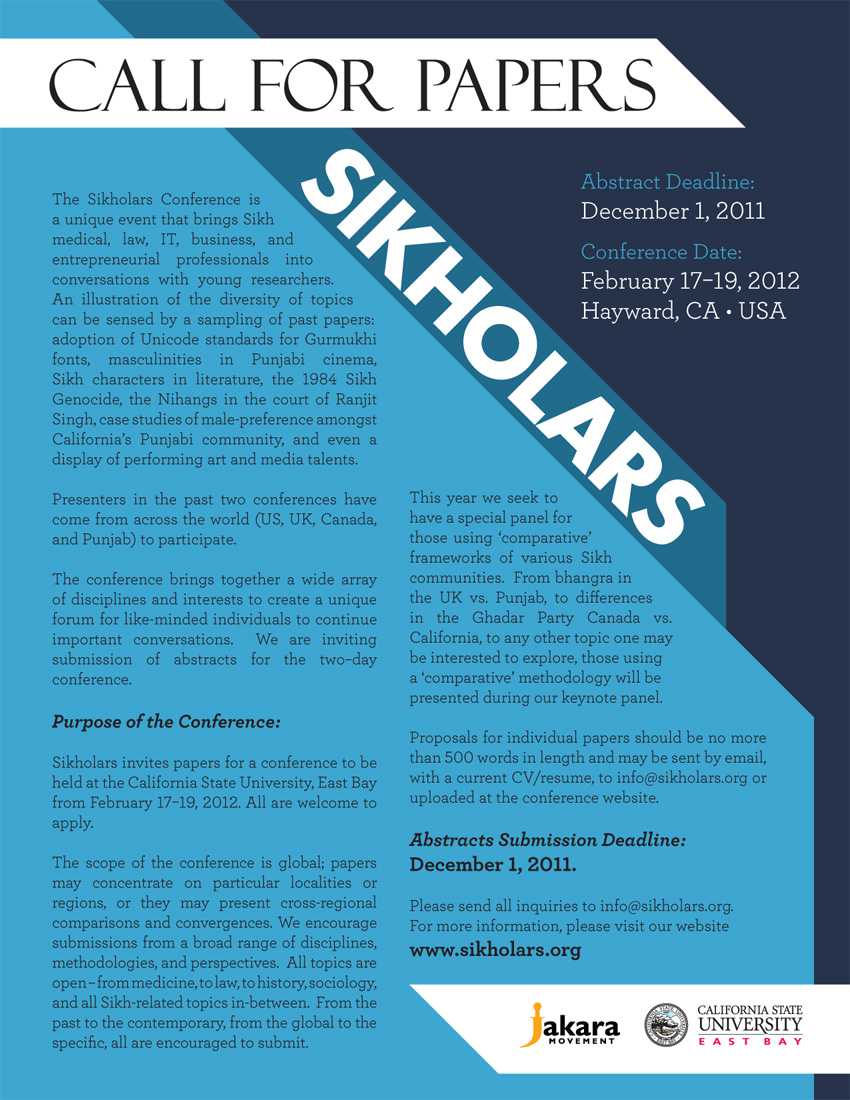 For the past two years, the Jakara Movement has created a forum for budding scholars and researchers, working on various projects Sikh, to come together, share, and challenge each one another.
For the past two years, the Jakara Movement has created a forum for budding scholars and researchers, working on various projects Sikh, to come together, share, and challenge each one another.
Over this period, it has become an extremely popular venue for community members, activists, and researchers to come together to engage on relevant issues. From Khalistan to Unix Coding, from sex-selective abortion to diasporic literature, from Nihangs in the court of Ranjit Singh to the historiography of Sikh studies, from Sikh sculpture and architecture to representations of masculinity in Punjabi films, from ecology of pre-Green Revolution Punjab to excerpts from a new book on Sikhs in Surrey to an amazing thabla-jazz infusion display, to even previews of newly-released movies with Sikh themes – there will be something that captivates and challenges you over the weekend. Please see previous abstracts from conferences 2010 and 2011 for more details.
 If you were looking to attend a Sikh retreat a decade ago, you may have had a difficult time finding one. Thankfully, this is no longer the case. We are now fortunate enough to have a plethora of retreats and conferences to participate in. These retreats offer Sikhs an opportunity to cultivate our spirituality in hopes of moving us forward on our journey, whatever stage we may be at.
If you were looking to attend a Sikh retreat a decade ago, you may have had a difficult time finding one. Thankfully, this is no longer the case. We are now fortunate enough to have a plethora of retreats and conferences to participate in. These retreats offer Sikhs an opportunity to cultivate our spirituality in hopes of moving us forward on our journey, whatever stage we may be at.
For the past several Septembers, I’ve packed up my things and traveled to Santa Cruz to attend Saanjh. Each year, i come back feeling fulfilled and rejuvinated. This year’s Saanjh will be particularly special – the organizers will be offering Amrit Sanchaar for those individuals who are ready to make this commitment. A note from the organizers states:
Photo Credit: Gurumustuk Singh
We are proud to announce that there will be a ‘Khandey Baatey di Paul’/ ‘Amrit Sanchaar’ at Saanjh this year. Khande di Pahul or Amrit is the most spiritually significant event in a Sikh’s life. When one decides to partake in Amrit, she or he makes a commitment to walk the Sikh spiritual path. Amrit is the beginning of a journey, not the end–it’s akin to admission into a school to study a subject matter seriously, not graduation. For those of you who are looking to make the commitment, may we offer Saanjh as the venue for your commitment ceremony.
The retreat will bring together young Sikhs from across North America (and sometimes beyond!) to participate and engage in Sikhi. Whether or not we are ready to take Amrit – Saanjh offers us a unique opportunity to observe and learn about this very special ceremony. The retreat is a venue where we can learn about these significant and important aspects of Sikhi and feel supported as we embrace our individual journeys. The sessions are dynamic and promise to inspire participants. This year’s breakout sessions will include, “Guru and I”, “Poetry is Not a Luxury”, “Vaisakhi of 1699”, “2084: Looking Back, Looking Forward”, and “Gendered Violence and Spirited Sikh Resistance”.
Saanjh is open to all above 18 years of age and will be held this year from September 8th to 11th 2011. Please see the website for more information and register before prices increase! See you there Langarites!
We have many songs that remind us of Shaheeds; we acknowledge them in our Ardas; and they are an integral part of our Sikh history. It is a powerful experience to hear how an integral concept in Sikhi manifests in other communities. Specifically the Muslim community, which also adheres to a concept of Shaheedi.
Often times in the media, the concept of Shaheedi has been presented as a form of “brainwashing” done by religious and political leaders to condone terrorism and violence for their own self-interests. However, a recent NPR report highlights how two devote Muslim men from America became Shaheeds out of their own strong will to bring justice back to their home country of Libya.
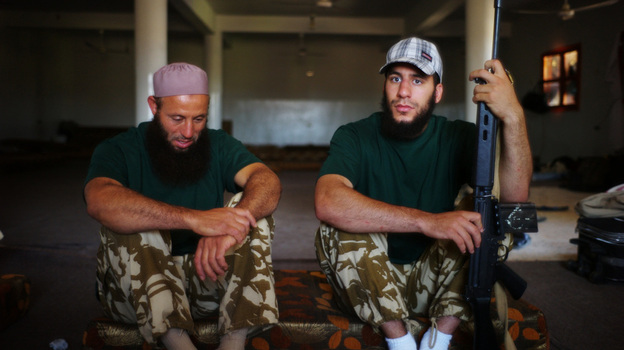
Mabruk Eshnuk (left) and his son Malik (right) left their home in Pittsburgh to volunteer and fight with rebels in western Libya's Nafusa Mountains.
A father and son left their home in Pittsburgh, Pennsylvania (USA) to participate in the Libyan revolution. Mabruk Eshnuk and his 21-year old middle son, Malik Eshnuk, died fighting the forces loyal to Moammar Gadhafi in western Libya.
Mabruk, a devoute Muslim had immigrated from Libya as a teenager. He taught Islam to convicts in the Pennsylvania state penitentiary system. In 2006, he housed the family of a young Iraqi boy who was getting lifesaving treatment in the United States. He said, “Everything that we do and work and help, it’s based on the Quran.” Outraged over what was happening in Libya, he took his middle son to fight in the Western mountains of Libya.
Kudarat 2011 at Olympic National Park on July 21- 24
“Inspiration from Within: Unlocking Sikh Creativity”
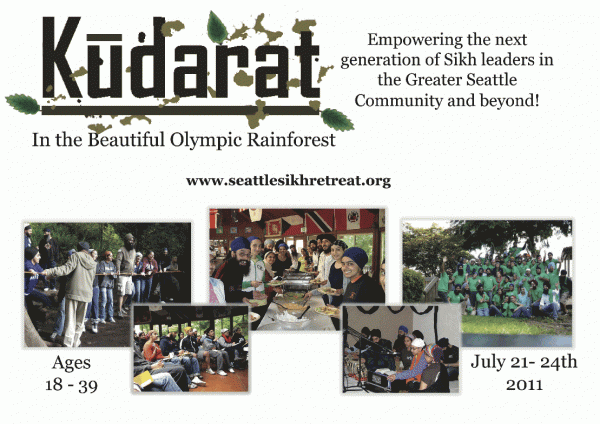 In my experience at conferences/retreats, or at youth camps there is a huge emphasis on sangat. What is it? Who are they? Or, how as an individual, we can make impact. In these discussions, I have intellectually understood sangat and, in some instances, would even go as far to say that I have experienced it.
In my experience at conferences/retreats, or at youth camps there is a huge emphasis on sangat. What is it? Who are they? Or, how as an individual, we can make impact. In these discussions, I have intellectually understood sangat and, in some instances, would even go as far to say that I have experienced it.
It is in this moment of EXPERIENCE that relationships develop. Whether with each other through the shared experience, with the Guru, with a feeling, or with an idea.
Tolsoy has explained “art” within a similar paradigm. “The activity of art is based on the fact that a man, receiving through his sense of hearing or sight another man’s expression of feeling, is capable of experiencing the emotion which moved the man who expressed it.”
Guest blogged by Pataka
 The intersections between Sikhism, gender issues, and academia have always been tenuous and fragile ones. As other posts on this blog have mentioned, there have been some recent pushes to democratize academic research as well as examine and undo the longstanding patriarchy which has surrounded academia in general by including discussions of gender politics as well as Sikh women scholars. For more information on SAFAR take a look at previous posts on this issue or visit their website: www.sikhfeministresearch.org .
The intersections between Sikhism, gender issues, and academia have always been tenuous and fragile ones. As other posts on this blog have mentioned, there have been some recent pushes to democratize academic research as well as examine and undo the longstanding patriarchy which has surrounded academia in general by including discussions of gender politics as well as Sikh women scholars. For more information on SAFAR take a look at previous posts on this issue or visit their website: www.sikhfeministresearch.org .
Our Journeys Conference 2011
On October 1st, 2011, SAFAR –The Sikh Feminist Research Institute will host a one-day conference entitled Our Journeys Conference 2011 at The Centre for Women’s Studies in Education (CWSE), Ontario Institute for Studies in Education of the University of Toronto (OISE), University of Toronto, Ontario, Canada.
Guest blogged by Adi Shakti Kaur
For as long as I can remember, I can envision the imprints of patriarchy within the Guruduaras (Sikh spaces of worship). The Guru, was more than sacred scriptures; more than a living embodiment of the ‘word’; more than a Guru, who took us from darkness to light; but a portal for us to connect to our own Divinity, a genderless form that was beyond the simple, human constructions of defining, labeling and understanding. But in the Guru’s Darbar (court of the Guru), it was brimming with gendered representations. The examples of patriarchy in Guruduaras are monolithic – every role in the Guru Darbar is dominated by men, from the giving of prashad to the katha vichar. Sikhi emerged out of a cultural, political, economic and social period that privileged the masculine gender, and of course patriarchy (as well as other hierarchical constructions).
The revolutionary stance that Sikhi took on the existing beliefs challenged all aspects of the zeitgeist during the Guru period. I articulate this now as a grown woman who has had the honour of a lifelong relationship with Sikhi, with Sikh institutions and with Sikhs, and who also has had the privilege of critically engaging in the world around her, particularly through her academic pursuits. In most Guruduaras, I have had the sacred opportunity to enter, I have been greeted by scenes staged with men occupying the privileged positions in the Guru Darbar, in the langar hall and in seva roles. When the stage is constantly set with masculine representations of Sikhs, from the physical men before me to the Gurus who established and nurtured Sikhi into its current status as a world religion, I never really considered that there was an institutional space for me, for my sister, for my mother, and any Sikh woman to occupy. And for many Sikh women that male privilege extends into their homes and extended families (thankfully there are anomalies like my parents).
As I delved further into Sikhi, I saw an opening for my feminine identity. The Gurus, starting with Guru Nanak Dev Ji, not only placed value in my sex and gendered identity, but honoured us with our everpresent Kaur title. The cultural, economic, political, and social backdrop is still patriarchy, no matter how you present the egalitarian and feminist interpretations inherent in Sikh philosophy, men were privileged, men were hyper visible and that tradition continues today in the majority of Sikh institutions (including the Guruduaras) and communities. Now that I am far removed from my childhood naïve absorption of the Sikh spaces around me, absorbing the patriarchy of my spiritual space, how do I carve out the egalitarian and feminist standpoints as a grown woman, as a mother to my daughter, so Kaurs can begin to chip away at the institutionalized patriarchal vantage position given to the masculine?
Our mothers and grandmothers would be proud. If we take a moment to pause, we’ll see the amazing mobilization that is occurring in the diaspora around Sikh women’s issues, particularly by youth. I’m not quite sure if it is a legit rise in websites or events or whether we are simply paying more attention to the topic. Regardless, it is clear that there are now more forums and platforms for discussion cultivating the need for women (and men!) to come together and address issues affecting Half the Sky. This post will give a round-up of some amazing work that is happening in our community, bringing together our qaum to discuss important issues affecting Sikh women.
 {Kaurista} It is clear that Sikh women, like all women around the world, value an open space to discuss issues that directly impact us. Whether it is conversations about clothes, hair, identity or our activism – there needs to exist a space that is catered to providing Sikh girls and women with a sense of unity. This type of comraderie cannot be understated – it impacts an individual’s self esteem and confidence in a substantial way. With the launch of Kaurista.com and the immediate posting of the link all over Facebook, it is hard not to notice how much support there is for this type of forum. Kaurista provides conversations on six different topics including, Lifestyle, Style & Beauty, Family, Inspiration and Health & Wellness. One of my favourite sections of the website is “Ask Kaurista” where questions related to wanting to marry a sardar, going to prom, or overcoming alcohol abuse are answered. The site is not only aimed at Sikh girls. In fact, it actively includes Sikh men in discussions – and perhaps the hope is that through these types of discussions, Sikh men will value how truly dynamic Sikh women are!
{Kaurista} It is clear that Sikh women, like all women around the world, value an open space to discuss issues that directly impact us. Whether it is conversations about clothes, hair, identity or our activism – there needs to exist a space that is catered to providing Sikh girls and women with a sense of unity. This type of comraderie cannot be understated – it impacts an individual’s self esteem and confidence in a substantial way. With the launch of Kaurista.com and the immediate posting of the link all over Facebook, it is hard not to notice how much support there is for this type of forum. Kaurista provides conversations on six different topics including, Lifestyle, Style & Beauty, Family, Inspiration and Health & Wellness. One of my favourite sections of the website is “Ask Kaurista” where questions related to wanting to marry a sardar, going to prom, or overcoming alcohol abuse are answered. The site is not only aimed at Sikh girls. In fact, it actively includes Sikh men in discussions – and perhaps the hope is that through these types of discussions, Sikh men will value how truly dynamic Sikh women are!
{HERSTORY}
New York City-based Vishavjit Singh, the creator of Sikhtoons, is releasing his very first Sikhtoons illustrated book next weekend at the Museum of Comic and Cartoon Art Festival in NYC. We’ve blogged about Vishavjit and Sikhtoons many times before, and are glad to see Sikhtoons going to the next level in book format.
According to Vishavjit, “The book focuses on dispelling the mysteries of the Sikh dastaar…target[ing] young and old, Sikh and Non-Sikh. The book features Fauja Singh, Hip Hop Singhs, Waris Ahluwalia and much more.”
Sikhtoons has long been a creative and light-hearted medium to tackle important issues for our community from 1984 to Hindutva, bullying in schools to contemporary Punjab politics. The details on the release event are below, and you can buy tickets in advance here and RSVP on Facebook here. Hopefully the book will be available to order online in the future. We’ll keep you posted.
Museum of Comic and Cartoon Art Festival
MoCCA Fest 2011!
Saturday April 9th and Sunday April 10th 11am-6pm
At the Lexington Avenue Armory
68 Lexington Ave (Between 25th &26th Streets)
New York, NY 10010
Guest blogged by santokh
A couple days ago I was reading some news articles on Hondh Chillar and Pataudi. Some of these articles include photographs from the two big events that took place at Hondh Chillar–clean up of the destroyed gurdwara building and Akhand Paath that took place thereafter in that building. I was talking to a couple friends about what all of this means for us as Sikhs, as youth with a vested interested in all things Punjab but separated from it by distance, and as a generation that, despite a fascination and infatuation with Punjab and Sikhi, seems disconnected to the memory of 1984 in many ways.
I was born a year after Operation Bluestar, no one from my family or relatives were directly affected by the genocide, my grandparents didn’t live close to New Delhi, Amritsar, or any of the other affected areas–Hondh Chillar and Pataudi, for example. As I was talking with my friends, I realized our awareness of Bluestar comes from websites, media, press releases by advocacy groups, a few books and essays, and the occasional speech at gurdwara or elsewhere almost as an annual ritual in June and November. It’s almost a kind of dynamic I can chart out–come the first week of June and November, emotions run high and my inbox is filled with invites to a number of vigils and memorials.
If I view the memory of Bluestar from the perspective of a generation before mine, everything changes. Many of my friends’ parents and grandparents were directly affected in 1984 as victims and/or witnesses. They have a direct connection to and memory of Bluestar. They know what media channels did and did not report, each of them is a walking memorial in a sense.
If you haven’t heard yet, March 14th, the First of the month of Chet in the Nanakshahi Calendar is being commemorated by Sikhs across six continents as ‘Sikh Vatavaran Diwas,’ or Sikh Environment Day.
Following an official statement from the Akal Takht, this week over 250 Gurdwaras, schools, and Sikh organizations around the world, along with Takht Sri Kesgarh Sahib and Takht Sri Hazur Sahib, will focus kirtan and katha on ‘kudrat’, host tree plantings, clean ups, nagar kirtans, children’s art displays, and Khalsa school lessons on the theme of the environment.
Here’s a video taken of the British Columbia sangat during an entire weekend of successful events organized by the Sikh Green Team, in conjunction with the Guru Nanak Sikh Gurdwara and Sukh Sagar Gurdwara Sahib. Sarya Nu Sri Guru Har Rai Sahib Ji de Gurgaddi Diwas Di Lakh Lakh Vadhaiyan Hove!

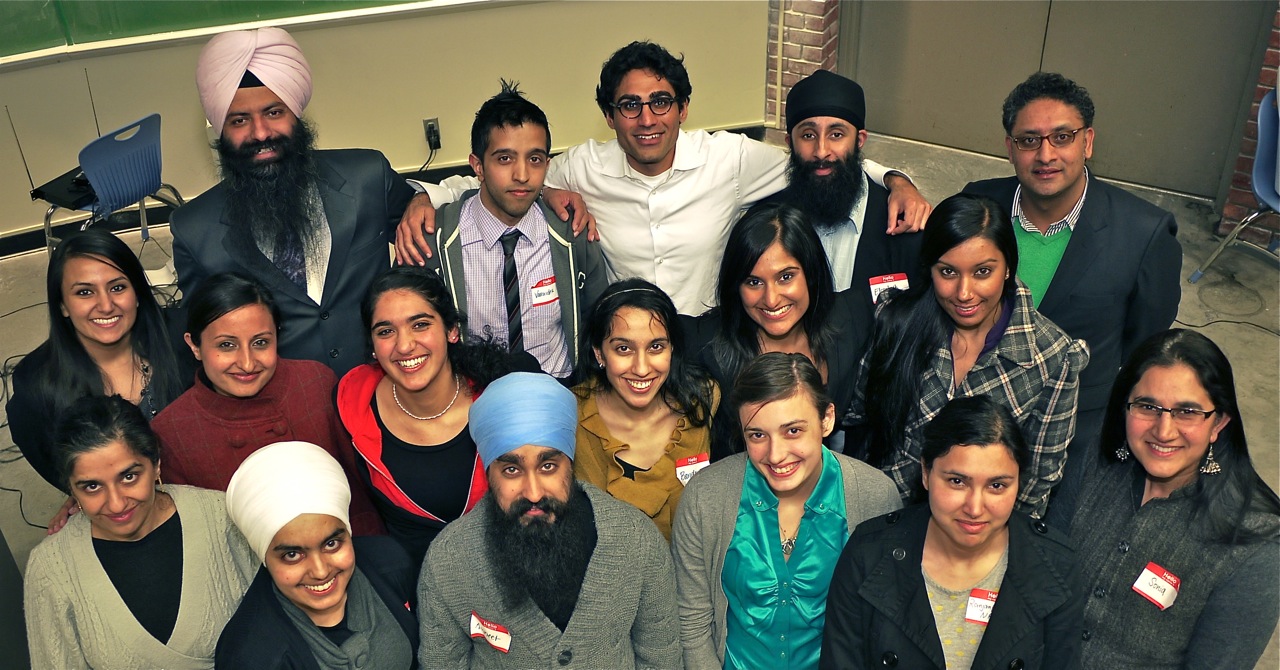
My apologies for a post that is far overdue. So Sikholars 2011 came and went. This year was an even greater success than last year with attendance of over 110+ and a growing number of presenters. This year’s Sikholars 2011 class – Kamal Arora, Amneet Singh Bali, Sonia Dhami, Amandeep Kaur Dhillon, Neelamjit Singh Dhillon, Sandeep Singh Dhillon, Roopan Kaur Gill, Gurbachan Singh Jandu, Tarnjit Kaur Johal, Varinder Singh Johal, Simran Kaur, Sujot Kaur, Tavleen Kaur, Semran Kaur Mann, Ranjanpreet Kaur Nagra, Neilinder Singh Ranu, Sharanjit Kaur Sandhra, and Elizabeth Weigler – was our best yet and we look forward to incoming Sikholars classes.
The event was made possible by the CSU East Bay Ethnic Studies Department, the Sabharwal Sikh and Punjabi Studies Chair, the CSU East Bay Sikh Students Association, the Jakara Movement, and the scores of volunteers.
Below the fold, as promised are uploaded copies of some of the papers (we did not receive permission from all the Sikholars to upload their papers due to ongoing research, publication in academic journals, etc.). These papers will be made available for one month as per our goal of greater democratization of research.
We look forward to Sikholars 2012
An exhibition showcasing British Bhangra music and Culture, titled ‘Soho Road to the Punjab’, will be crossing the pond from the UK to New York City on March 18th 2011 at 6pm. The USA version of the exhibition, Soho Road – Five Rivers to Five Boroughs, will be the world’s first visual arts exhibition inspired by Bhangra music and culture held outside of the UK. The event is being hosted by 92YTribeca and is free to the public.
Originally debuting in Birmingham, UK, Soho Road to the Punjab is an exhibition that includes photography, album sleeves, promotional art and rare prints from South Asian media. This contemporary archive uncovers the worldwide Bhangra phenomenon, showcasing individuals who have championed the UK and USA Bhangra scene.
“Soho Road – from the Five Rivers to the Five Boroughs” is a gift of a title. The Punjab is, of course, the Land of the Five Rivers, while New York iconically comprises Brooklyn, Queens, Manhattan, Staten Island and the Bronx. This is a symmetry just too much too leave alone – it’s a sign! Queens is the largest and the most diverse, and famous as the birthplace of bebop and jazz. Queens also has the largest Sikh population outside California and the highest concentration of Indians anywhere in America. Punjabi is in the top ten of the hundred-odd languages spoken locally, and almost half of all South Asians who live in New York live in Queens. The NY experience will shape the show for the USA. [link]
The event will be held at 92YTribeca, 200 Hudson Street, New York. For more information and to view the exhibition online, see the Facebook page.

